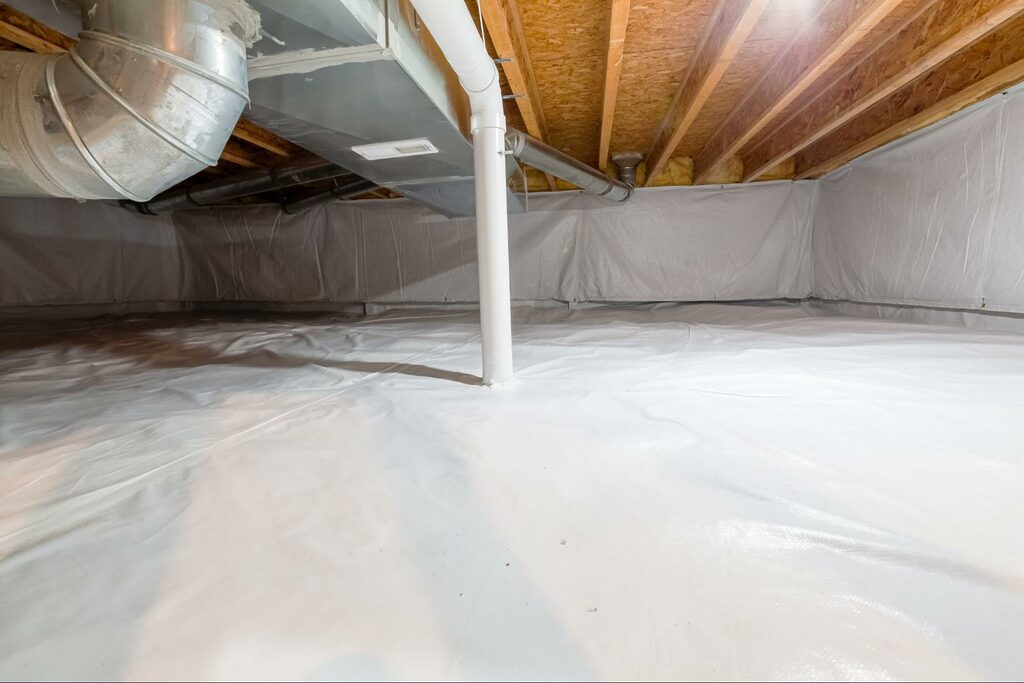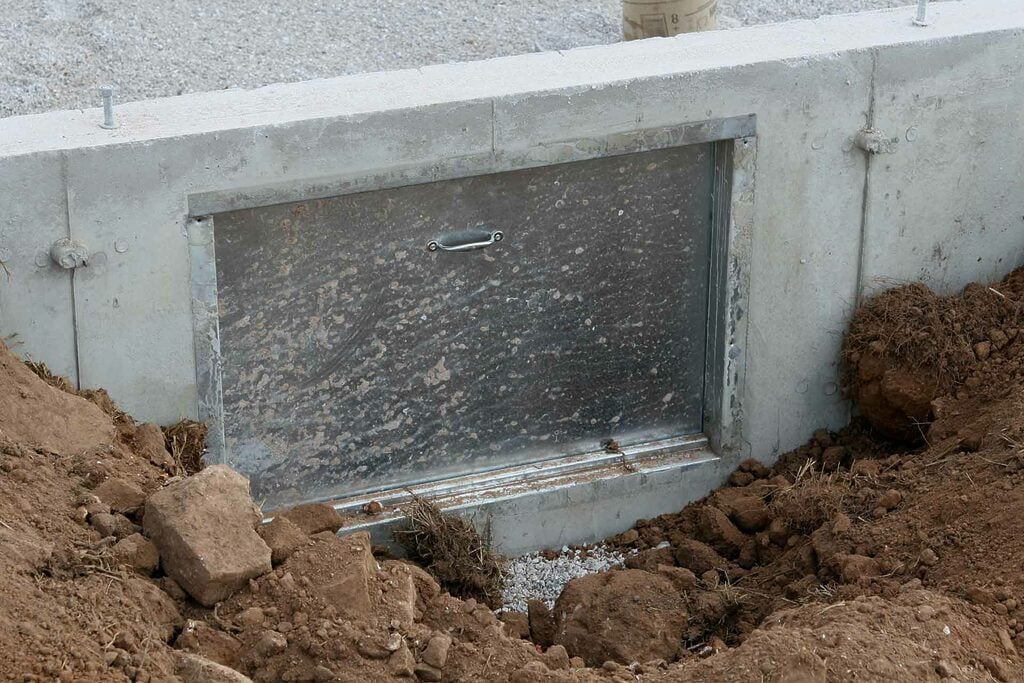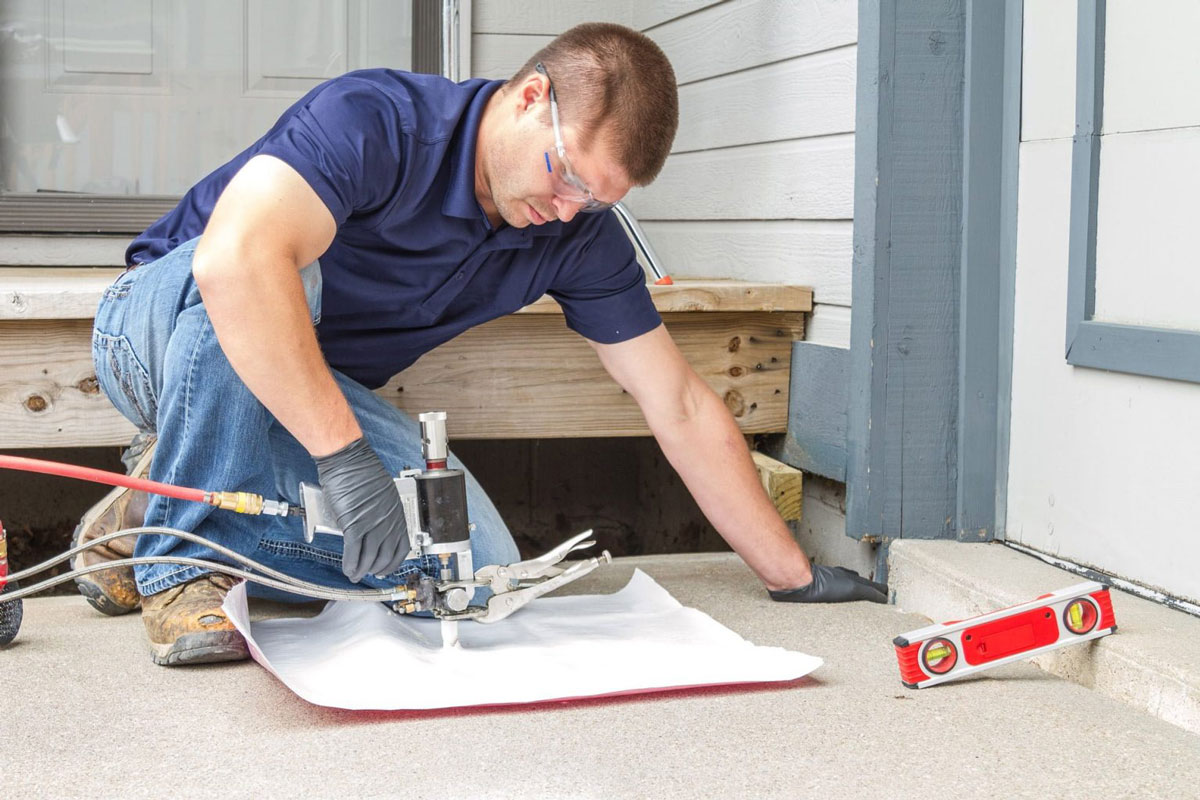Services
Get Your Free Estimate Now!
Serving the Triad, Triangle and Eastern North Carolina
to the Coast.
Regional Foundation & Crawl Space Repair is your trusted contractor, delivering proven solutions to keep your crawl space dry, mold-free, and structurally sound.
Crawl space encapsulation transforms the dark, damp space beneath your home into a cleaner, drier, and healthier environment. Crawl spaces are often neglected and overlooked, but they significantly impact the air quality and structural integrity of your home. Encapsulation involves sealing the crawl space using a combination of heavy-duty plastic sheets, insulation materials, and dehumidifiers to create an airtight barrier. This barrier prevents moisture, pests, and outdoor air from entering the crawl space. It also helps to regulate your home’s temperature and humidity levels, making it more energy-efficient.

The first step in crawl space encapsulation is to inspect the space thoroughly to identify any existing issues, such as structural problems, water damage, mold growth, or pests. These issues must be addressed before proceeding with encapsulation. The space should also be cleaned thoroughly to remove any debris or contaminants.

The vents of the crawl space are then sealed to prevent any air or moisture from entering the area through these openings. This is done by covering the vents with airtight covers.

A drainage system must be installed to prevent water from entering the crawl space. This involves digging a trench around the perimeter of the space, installing a drain pipe, and covering it with gravel to allow water to flow away from the foundation. This usually involves installing a sump pump as well.

The vapor barrier is installed on the walls and floor of the crawl space to create an airtight seal. The most common material used for this is a 20-mil thick polyethylene plastic sheeting. The sheeting is cut to fit the dimensions of the space and then attached with adhesive or mechanical fasteners. All seams and joints must be sealed to prevent air or moisture from entering the area.

A dehumidifier is installed to maintain the ideal humidity level in the crawl space. This is important to prevent mold and mildew growth and improve indoor air quality.
Crawl space encapsulation is a complex process that requires professional expertise. It can take a few days to complete, depending on the size and condition of the crawl space.


At Regional Foundation & Crawl Space Repair, we follow a comprehensive 4-step approach to crawl space encapsulation that ensures maximum efficiency and long-lasting results. Our process is designed to identify the root cause of the problem, create a tailored action plan, execute the encapsulation process, and evaluate the results to ensure that the crawl space is well-protected.
1. Assessment – The first step in our approach is to assess the crawl space thoroughly. This includes identifying any signs of moisture, water intrusion, mold, pests, and structural issues.
2. Create an action plan – Based on the findings from the assessment, we create a customized action plan that addresses the specific needs and challenges of the crawl space. This includes identifying the best encapsulation materials, designing a drainage system, and addressing structural issues. We provide a detailed estimate of the cost and timeline for the project, ensuring that our clients are well-informed throughout the process.
3. Encapsulate the crawl space – The next step is to execute the encapsulation process. This involves sealing the crawl space with a vapor barrier, installing a drainage system to prevent water buildup, and addressing any structural issues identified in the assessment phase. Our team of experienced professionals uses high-quality materials and advanced equipment to ensure that the crawl space is well protected from moisture, mold, pests, and other potential problems.
4. Results – Finally, we evaluate the results of the crawl space encapsulation to ensure that the project was successful. We conduct a final assessment to confirm that the crawl space is well-protected and free of moisture, mold, pests, and other issues. We also provide our clients with a detailed report of the work done and any ongoing maintenance and care recommendations.
Hear from our satisfied customers who attest to the quality and durability of our crawl space encapsulation services:
The cost of crawl space encapsulation will vary depending on various factors, including the size of the crawl space, the type of vapor barrier used, and any additional repairs or improvements needed. While an upfront cost is associated with encapsulation, it can ultimately save homeowners money in the long term by improving energy efficiency and preventing costly damage from moisture, mold, and pests.
While it is possible to encapsulate a crawl space yourself, hiring a professional for this task is generally recommended. Crawl space encapsulation requires specialized equipment and expertise to ensure the space is properly sealed and ventilated. Additionally, a professional can help identify any underlying issues that may need to be addressed to ensure the long-term effectiveness of the encapsulation.
The length of time it takes to encapsulate a crawl space will depend on the size and condition of the space. The process usually takes no more than a few days. Factors such as the size of the crawl space, and the need for additional repairs or improvements can all impact the timeline.
Don’t let moisture undermine your home’s foundation. Contact us today for a free inspection and personalized quote. Trust Regional Foundation & Crawl Space Repair to keep your crawl space dry and your home safe.
Serving Raleigh, Durham, Greenville, and nearby areas in Eastern North Carolina.
Get Your Free Estimate Now!
Serving the Triad, Triangle and Eastern North Carolina to the Coast.